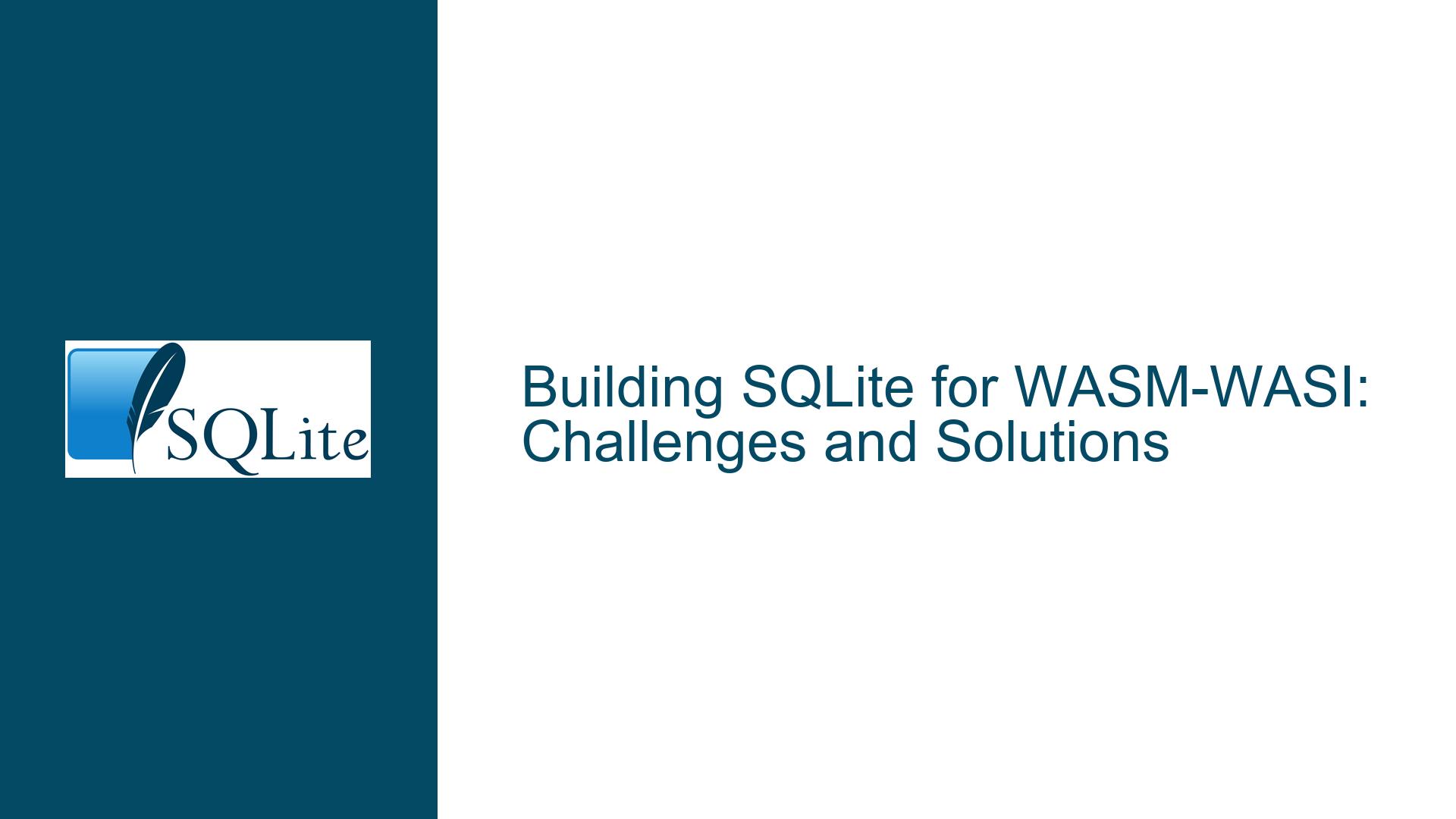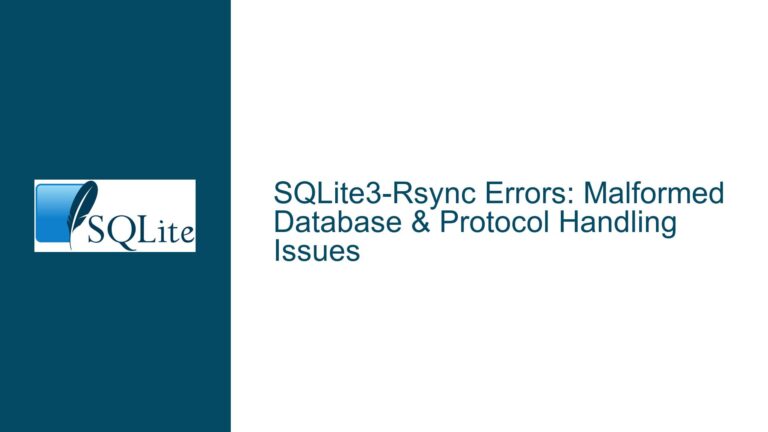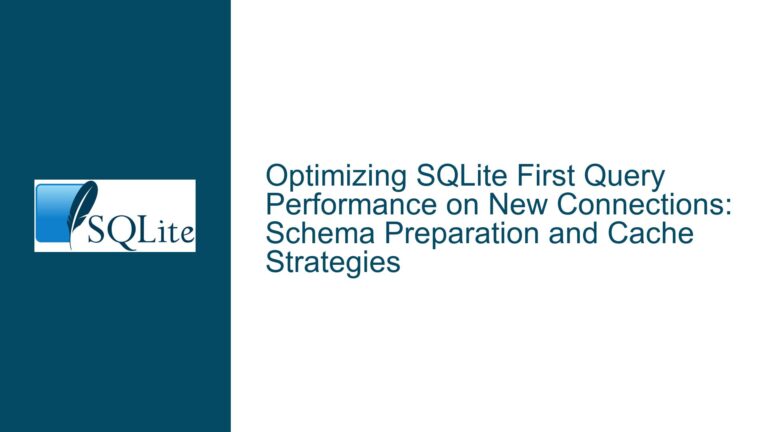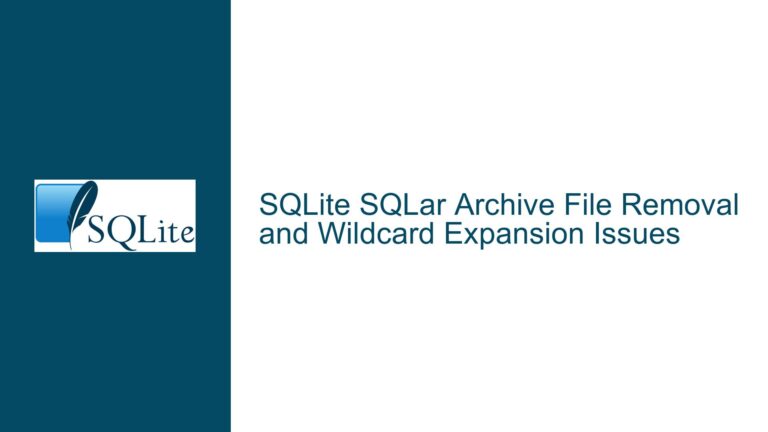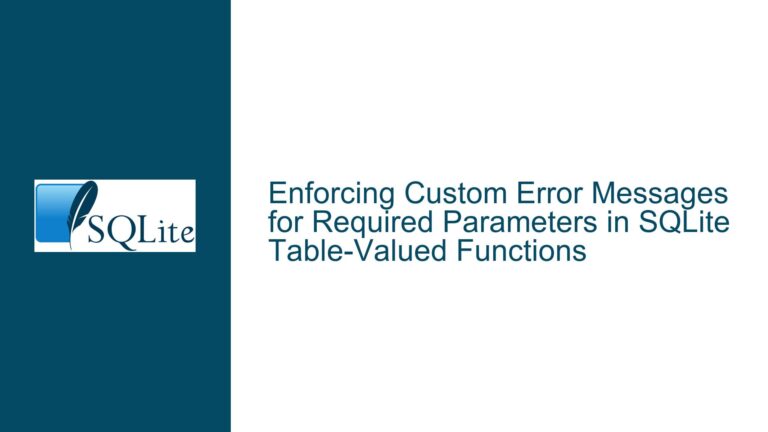Building SQLite for WASM-WASI: Challenges and Solutions
Issue Overview: Building SQLite for WASM-WASI and Server-Side WebAssembly
The core issue revolves around building SQLite for the WebAssembly System Interface (WASI), specifically targeting the wasm32-wasi architecture. WASI is a system interface designed to allow WebAssembly (Wasm) to run securely on the server side, enabling access to system resources like the filesystem. However, SQLite, being a lightweight, embedded database, was not originally designed with WASI in mind. This has led to several challenges in adapting SQLite to work seamlessly in a WASM-WASI environment.
The primary challenges include the absence of certain POSIX system calls in WASI, which are crucial for SQLite’s operation. For instance, file locking mechanisms, which are essential for database consistency and concurrency control, are not natively supported in WASI. Additionally, the Virtual File System (VFS) interface in SQLite, which abstracts file system operations, needed to be modified to work with WASI’s limited system call set. The unix VFS, which relies heavily on POSIX calls, had to be replaced with a custom implementation (dotLockIoFinder) to handle file locking in a WASI-compatible manner.
Furthermore, the build process for SQLite in a WASM-WASI environment requires specific compiler flags and configuration options. These adjustments ensure that the resulting SQLite library is compatible with the WASI runtime and can perform essential database operations without relying on unsupported POSIX features. The goal is to make SQLite buildable for wasm32-wasi out of the box, enabling developers to use SQLite in server-side WebAssembly applications without extensive modifications.
Possible Causes: Why SQLite Faces Challenges in WASM-WASI Environments
The challenges in building SQLite for WASM-WASI stem from several fundamental differences between traditional operating systems and the WebAssembly runtime. WASI is designed to be a lightweight, sandboxed environment that prioritizes security and portability. As a result, it does not provide the full range of system calls and features that are available in traditional POSIX-compliant operating systems. This limitation directly impacts SQLite, which relies on several POSIX features for its core functionality.
One of the most significant issues is the lack of POSIX file locking in WASI. File locking is a critical feature for SQLite, as it ensures that multiple processes or threads can safely access the same database file without causing data corruption. In traditional environments, SQLite uses the fcntl system call to implement file locking. However, WASI does not support fcntl, necessitating the creation of a custom file locking mechanism. The dotLockIoFinder VFS was developed as a workaround, but it is not as robust or efficient as the native POSIX implementation.
Another challenge is the absence of certain POSIX system calls that SQLite relies on for file system operations. For example, SQLite uses mmap for memory-mapped I/O, which can significantly improve performance by allowing direct access to database files in memory. However, WASI does not support mmap, forcing SQLite to fall back to slower, less efficient file I/O methods. This limitation can have a significant impact on the performance of SQLite in WASM-WASI environments, particularly for applications that require high throughput or low latency.
The build process itself also presents challenges. SQLite is typically built using standard C compilers like GCC or Clang, with a set of predefined configuration options that are optimized for traditional operating systems. However, building SQLite for WASM-WASI requires a different set of compiler flags and configuration options to ensure compatibility with the WASI runtime. This includes disabling certain features that rely on unsupported POSIX calls and enabling alternative implementations that are compatible with WASI.
Troubleshooting Steps, Solutions & Fixes: Adapting SQLite for WASM-WASI
To address the challenges of building SQLite for WASM-WASI, several steps can be taken to modify the SQLite codebase and build process. These steps involve both code changes and configuration adjustments to ensure compatibility with the WASI runtime.
1. Modifying the VFS Interface for WASI Compatibility
The first step is to modify the Virtual File System (VFS) interface in SQLite to work with WASI’s limited system call set. The unix VFS, which is the default VFS for Unix-like systems, relies heavily on POSIX calls that are not available in WASI. To address this, a custom VFS implementation, such as dotLockIoFinder, can be used. This custom VFS replaces the POSIX file locking mechanism with a WASI-compatible alternative.
The dotLockIoFinder VFS uses a file-based locking mechanism that creates lock files in the same directory as the database file. These lock files are used to coordinate access to the database file, ensuring that only one process or thread can write to the database at a time. While this approach is not as efficient as POSIX file locking, it provides a workable solution for WASI environments.
In addition to file locking, the custom VFS must also handle other file system operations that are not supported by WASI. For example, the mmap system call, which is used for memory-mapped I/O, must be replaced with standard file I/O operations. This can be done by modifying the unix VFS to use read and write system calls instead of mmap. While this change may result in a performance penalty, it ensures that SQLite can function correctly in a WASI environment.
2. Adjusting Compiler Flags and Configuration Options
The next step is to adjust the compiler flags and configuration options used to build SQLite for WASM-WASI. This involves disabling certain features that rely on unsupported POSIX calls and enabling alternative implementations that are compatible with WASI.
For example, the SQLITE_OMIT_WAL configuration option can be used to disable the Write-Ahead Logging (WAL) feature, which relies on mmap for memory-mapped I/O. Disabling WAL forces SQLite to use the older rollback journal mechanism, which does not require mmap. While this change may reduce performance, it ensures that SQLite can function correctly in a WASI environment.
Similarly, the SQLITE_OMIT_SHARED_CACHE option can be used to disable shared cache mode, which relies on POSIX file locking. Disabling shared cache mode ensures that SQLite uses the custom file locking mechanism provided by the dotLockIoFinder VFS.
In addition to these configuration options, specific compiler flags must be used to ensure that the resulting SQLite library is compatible with the WASI runtime. For example, the -target wasm32-wasi flag must be used to target the wasm32-wasi architecture. Other flags, such as -nostdlib and -Wl,--export-all, may also be necessary to ensure that the resulting WebAssembly module can be loaded and executed by the WASI runtime.
3. Testing and Validation
Once the necessary code changes and configuration adjustments have been made, the final step is to test and validate the modified SQLite library in a WASM-WASI environment. This involves building the SQLite library using the adjusted compiler flags and configuration options, and then running a series of tests to ensure that the library functions correctly.
The tests should cover a range of database operations, including creating and opening databases, reading and writing data, and handling concurrent access. Special attention should be paid to file locking and concurrency control, as these are areas where the custom VFS implementation may differ from the native POSIX implementation.
In addition to functional testing, performance testing should also be conducted to evaluate the impact of the changes on SQLite’s performance. This includes measuring the time taken to perform common database operations, such as inserting and querying data, and comparing the results to those obtained with the native SQLite library.
If any issues are identified during testing, further adjustments may be necessary. This could involve refining the custom VFS implementation, adjusting the compiler flags and configuration options, or making additional code changes to address specific issues.
4. Contributing Changes to the SQLite Codebase
Once the modified SQLite library has been thoroughly tested and validated, the final step is to contribute the changes back to the SQLite codebase. This involves working with the SQLite development team to ensure that the changes are compatible with the existing codebase and meet the project’s quality standards.
As mentioned in the discussion, the SQLite project has strict requirements for contributing code, including the need for contributors to sign an affidavit dedicating their work to the public domain. This requirement is in place to ensure that SQLite remains in the public domain and can be freely used by anyone.
If the necessary legal requirements are met, the changes can be submitted as a patch to the SQLite development team. The team will review the patch and, if it meets their standards, incorporate it into the official SQLite codebase. This will allow other developers to build SQLite for WASM-WASI out of the box, without the need for extensive modifications.
In conclusion, building SQLite for WASM-WASI presents several challenges, but these can be overcome with careful modifications to the SQLite codebase and build process. By addressing the limitations of the WASI runtime and making the necessary adjustments, it is possible to create a version of SQLite that is fully compatible with server-side WebAssembly applications.
